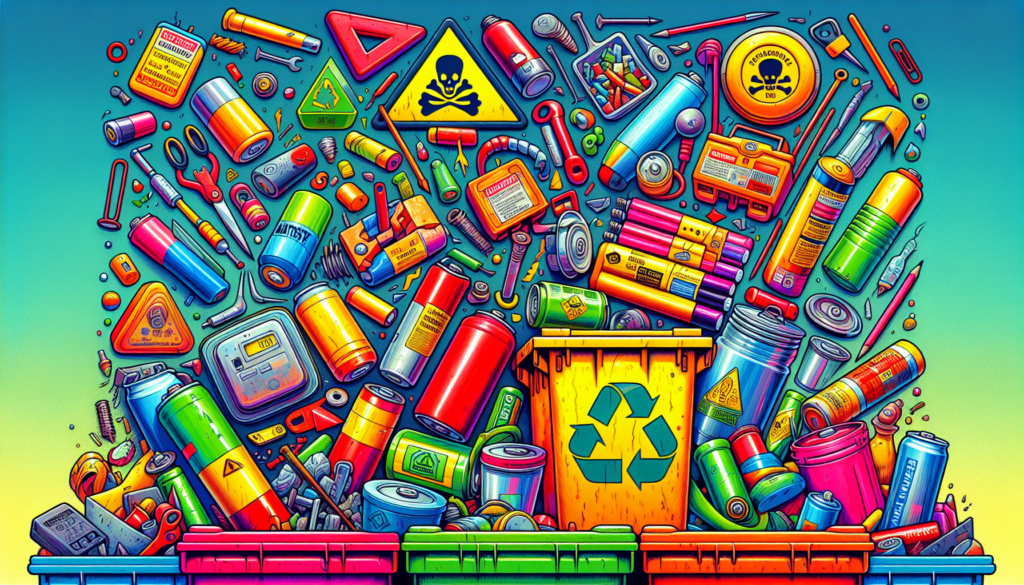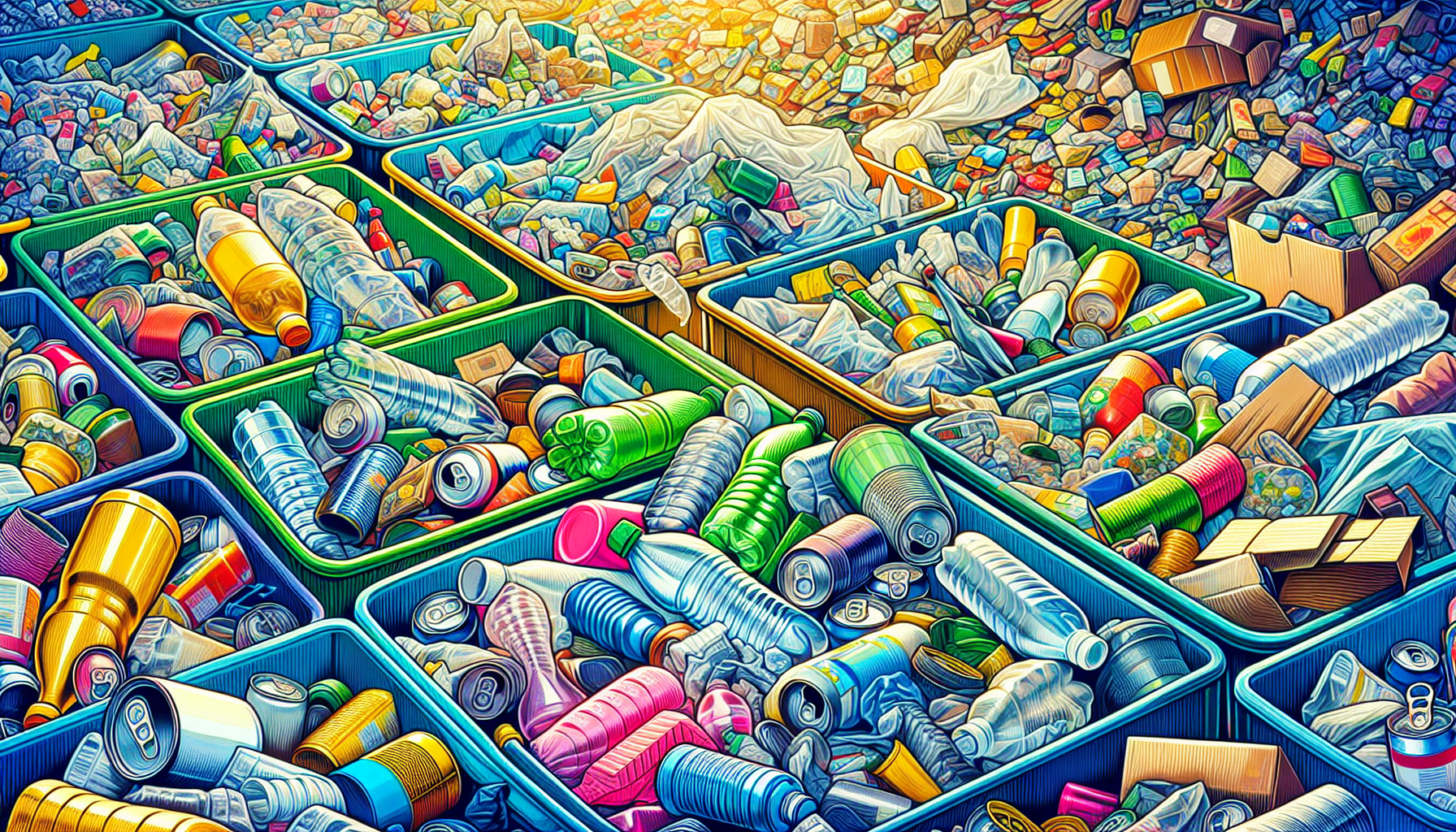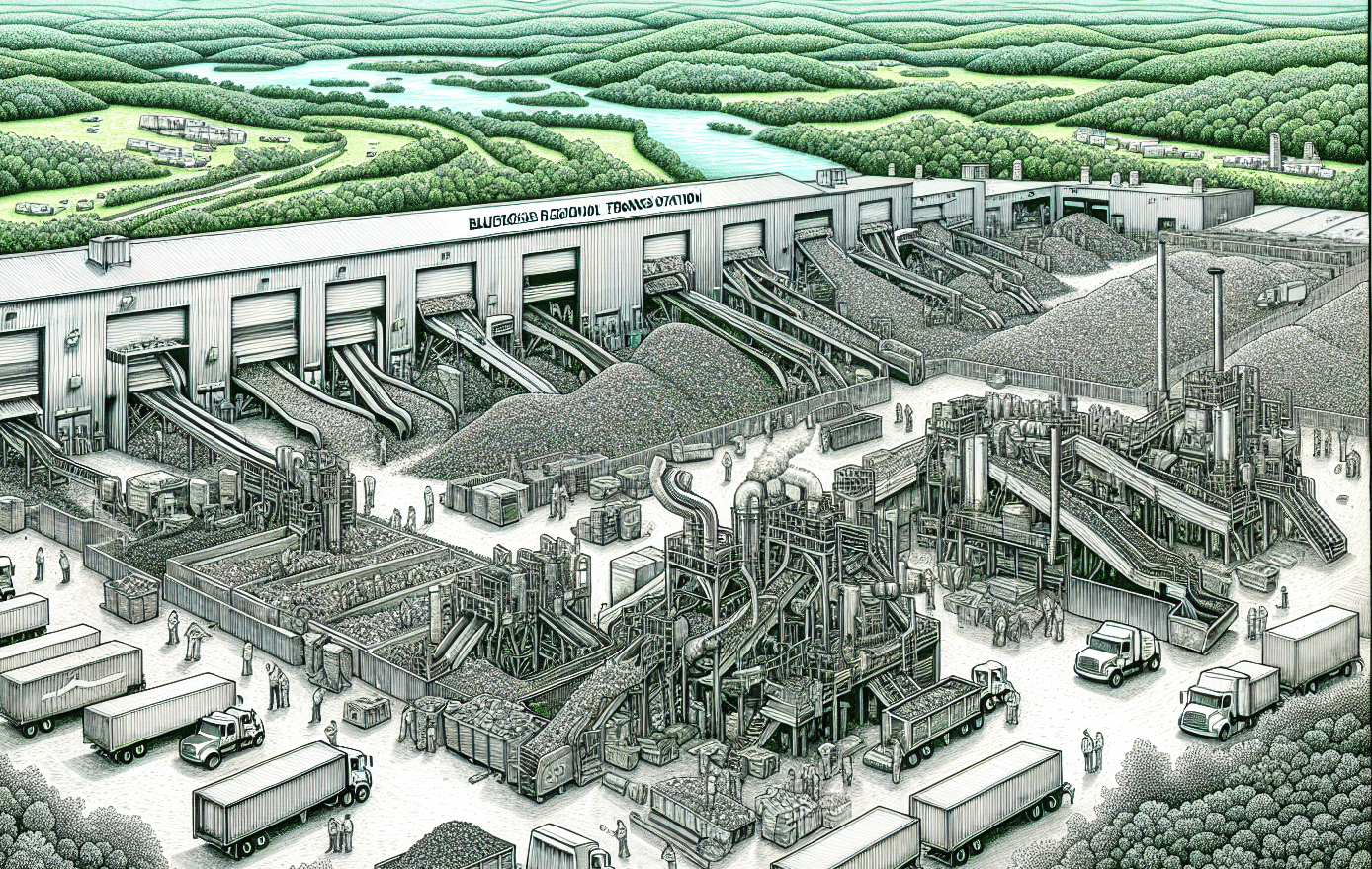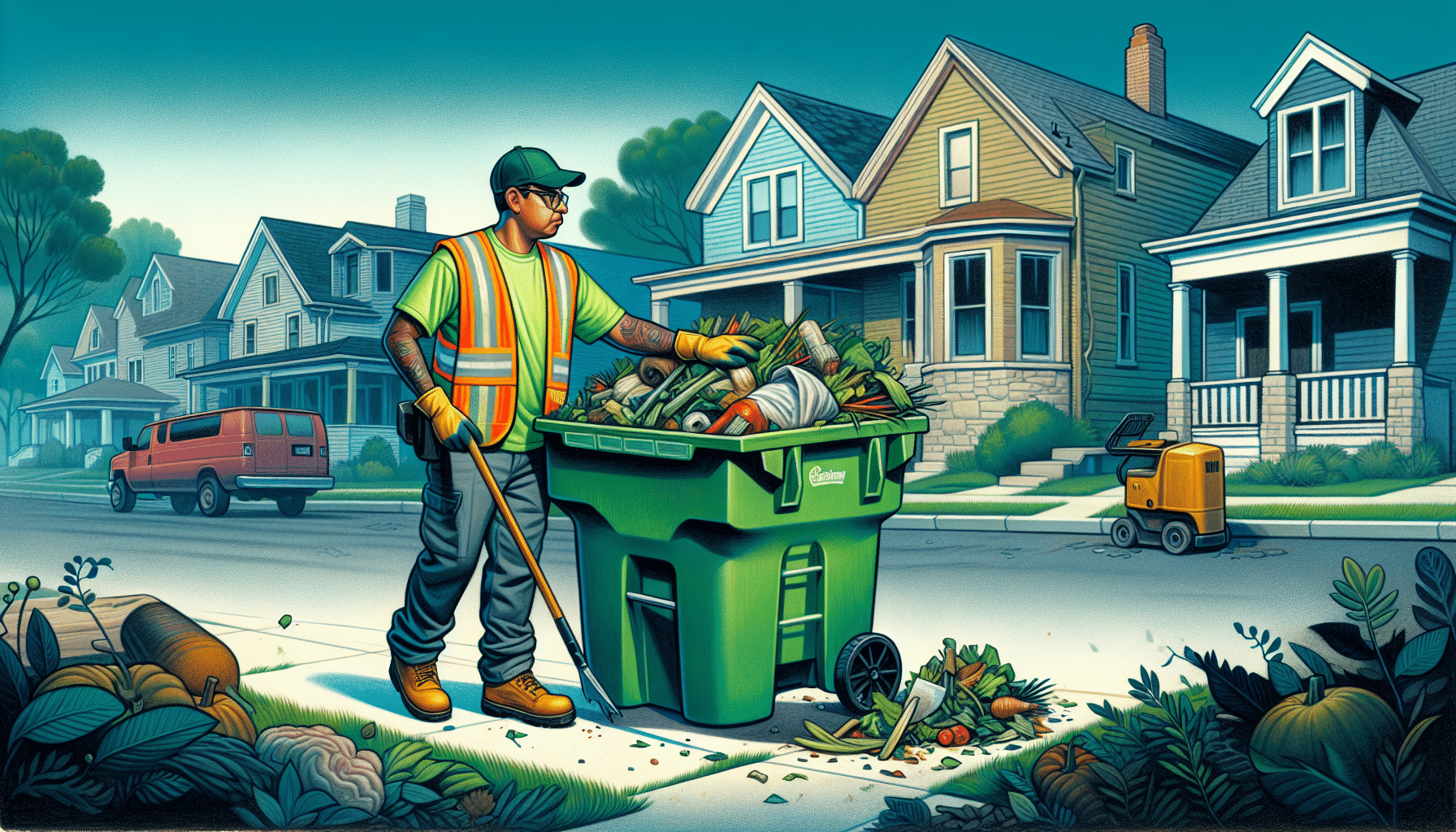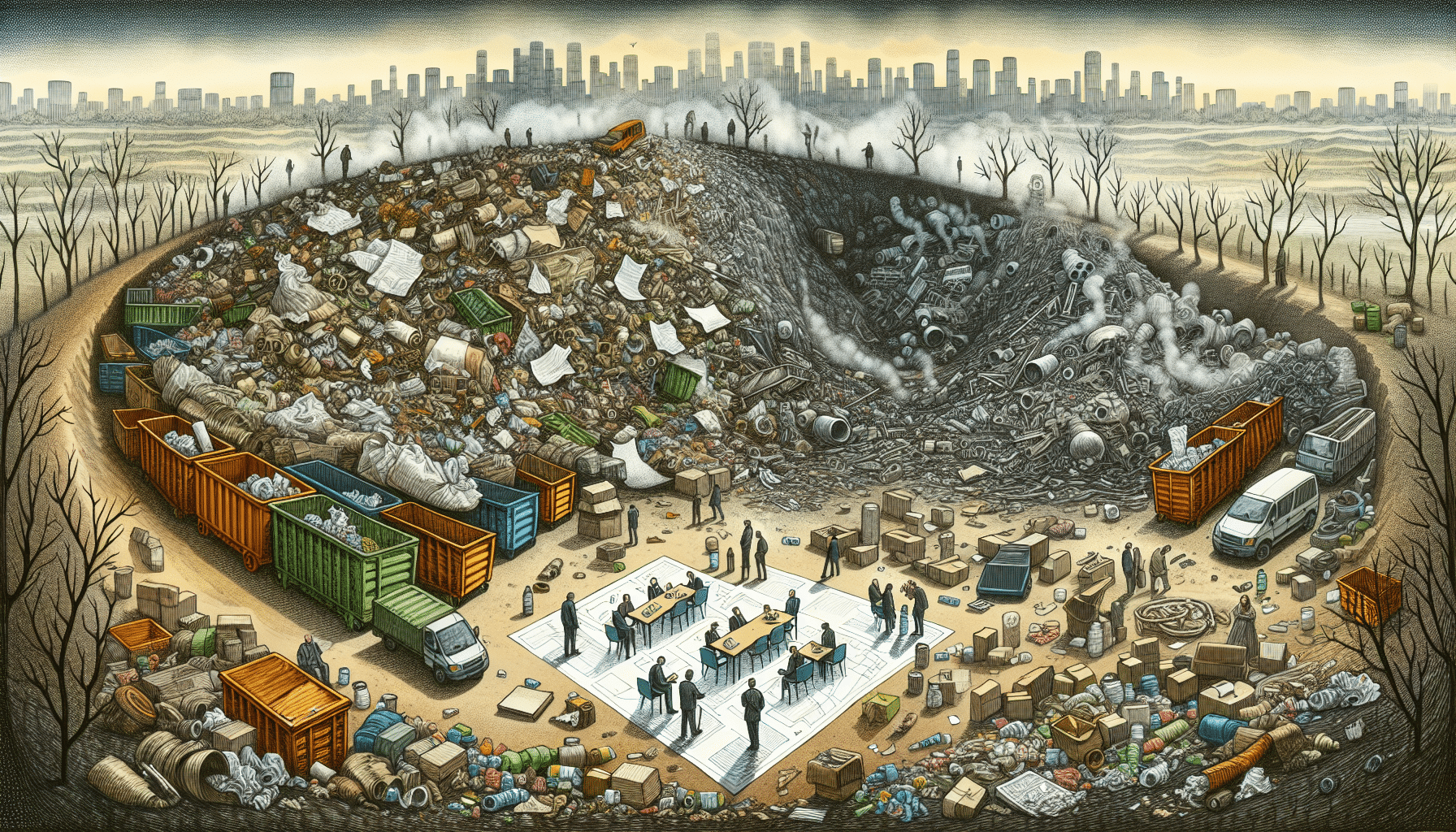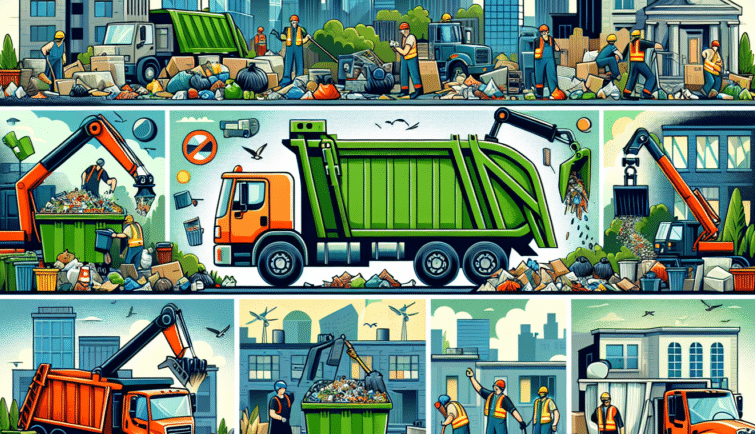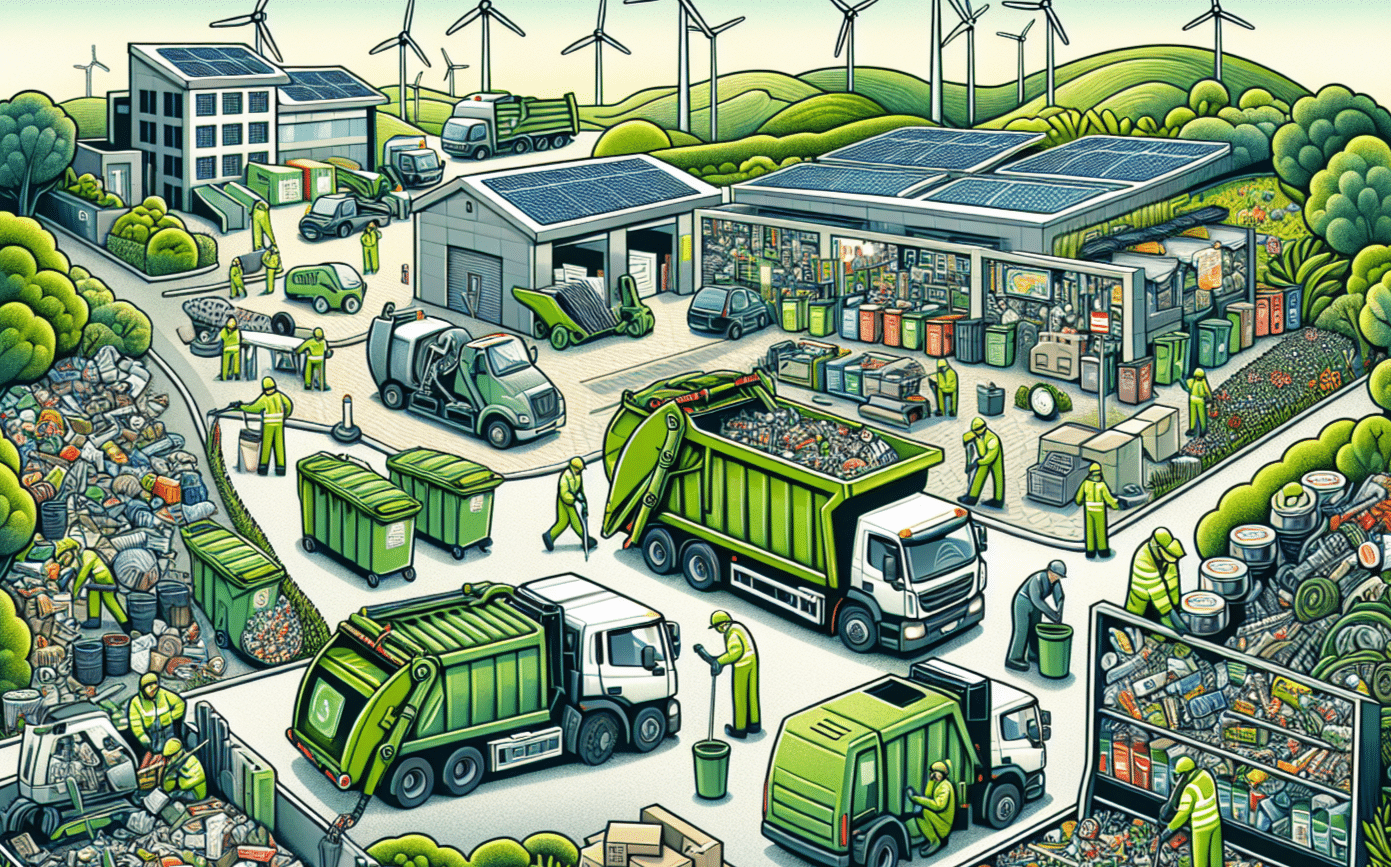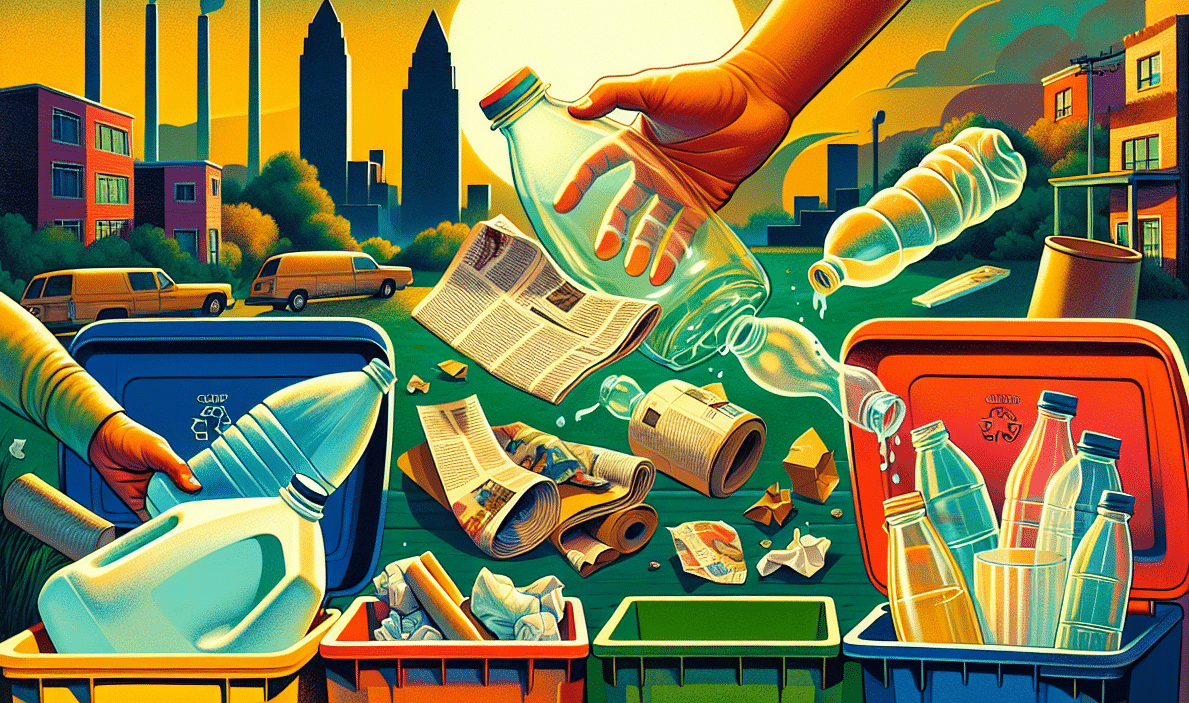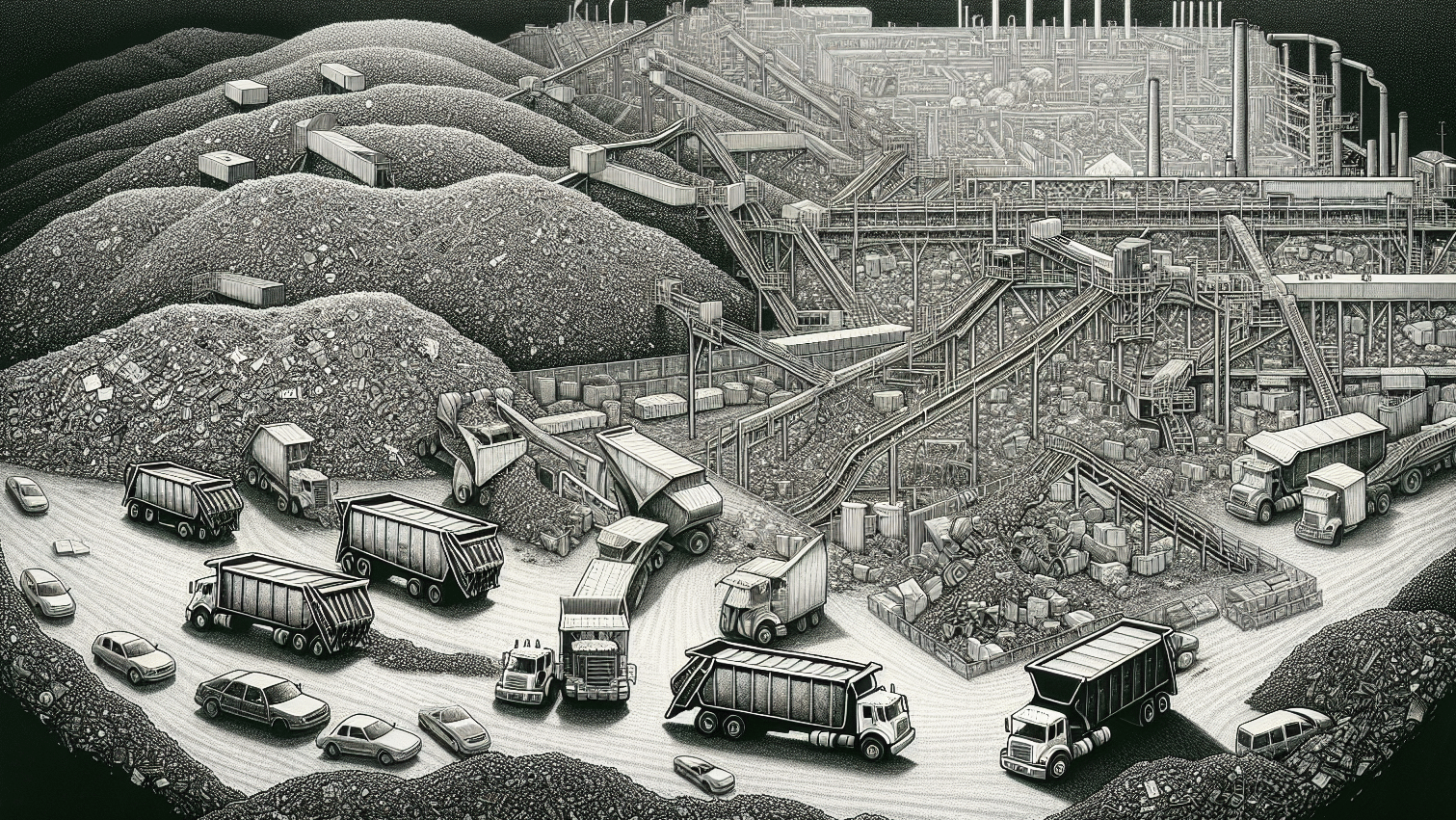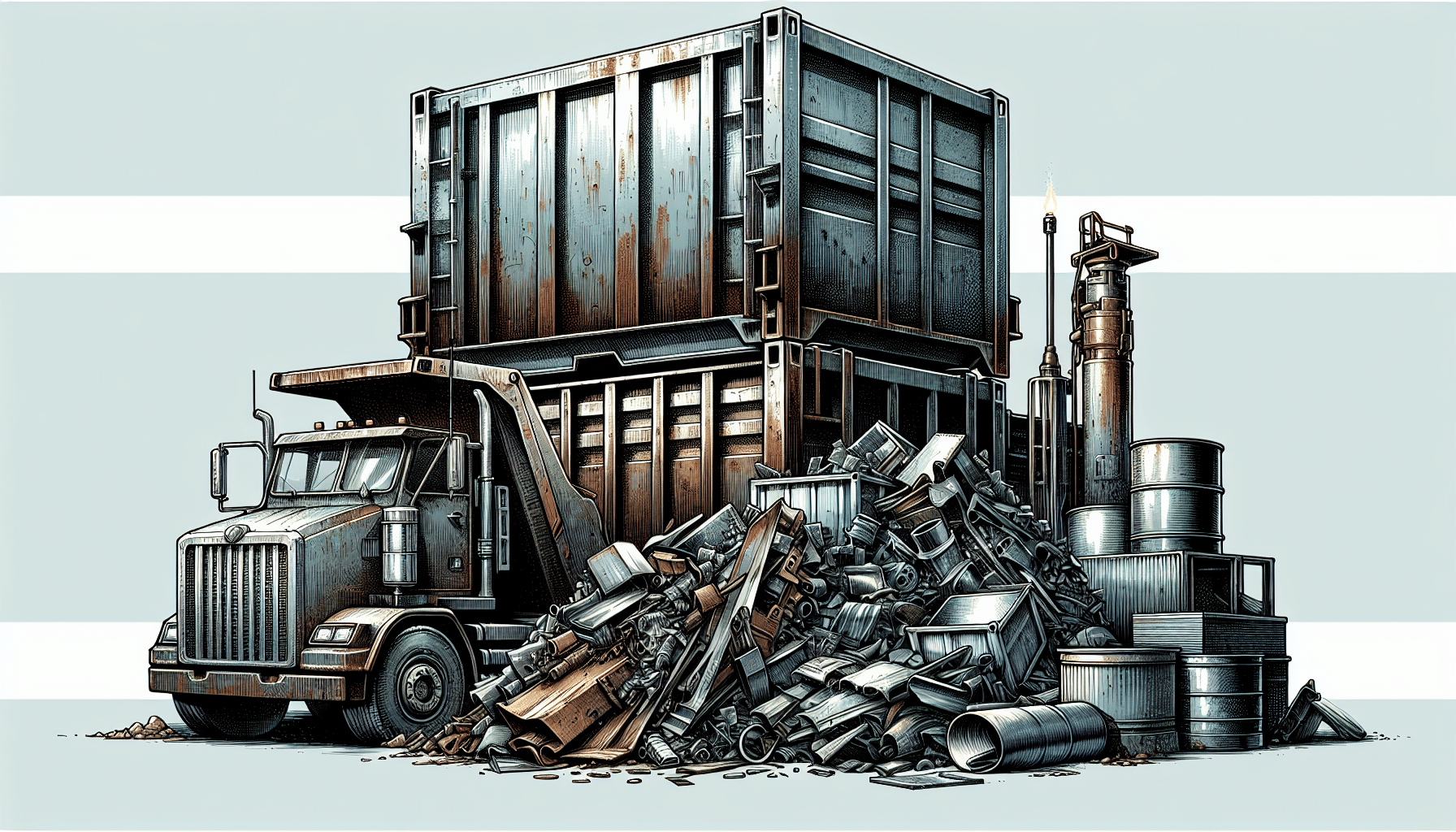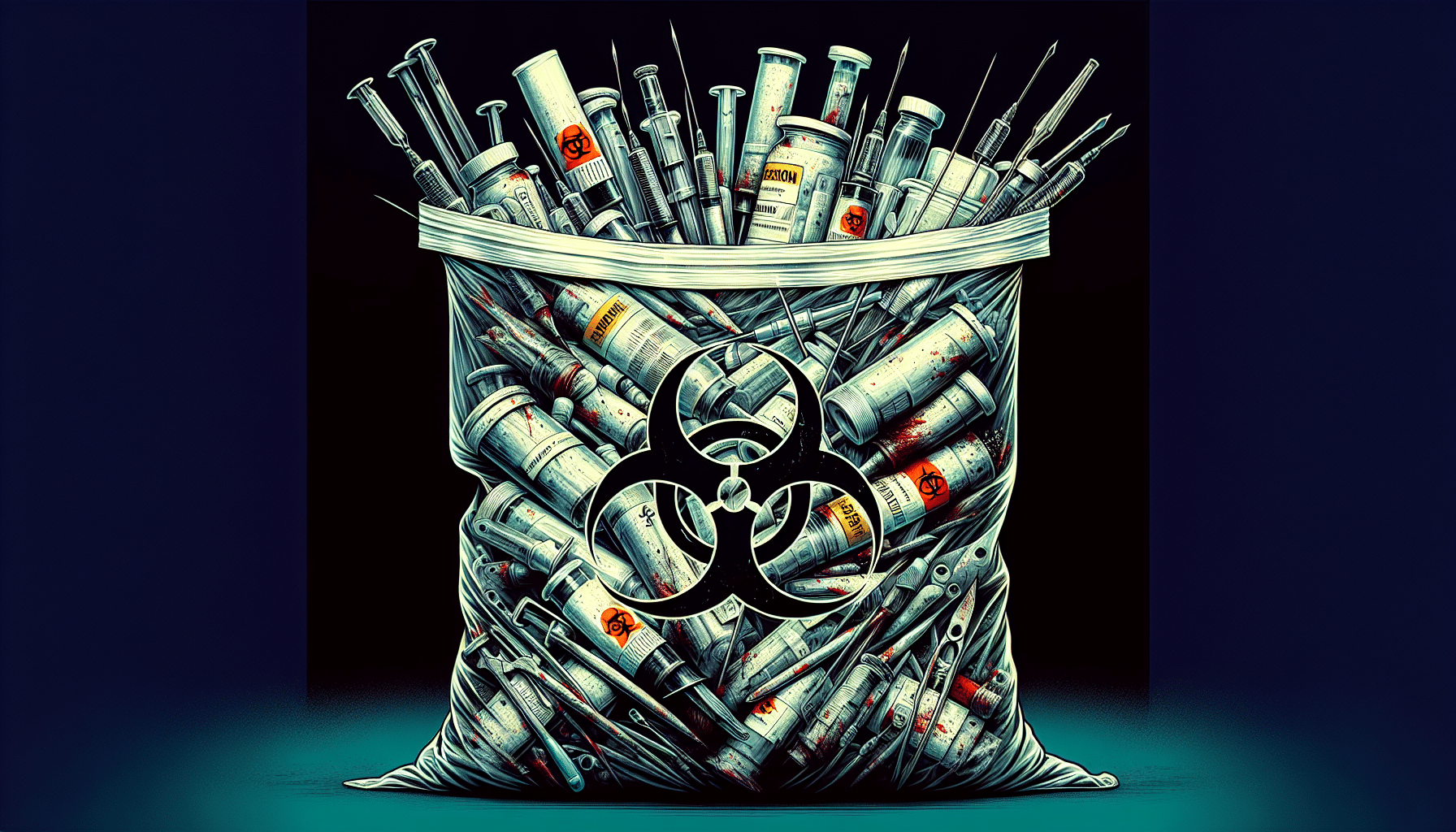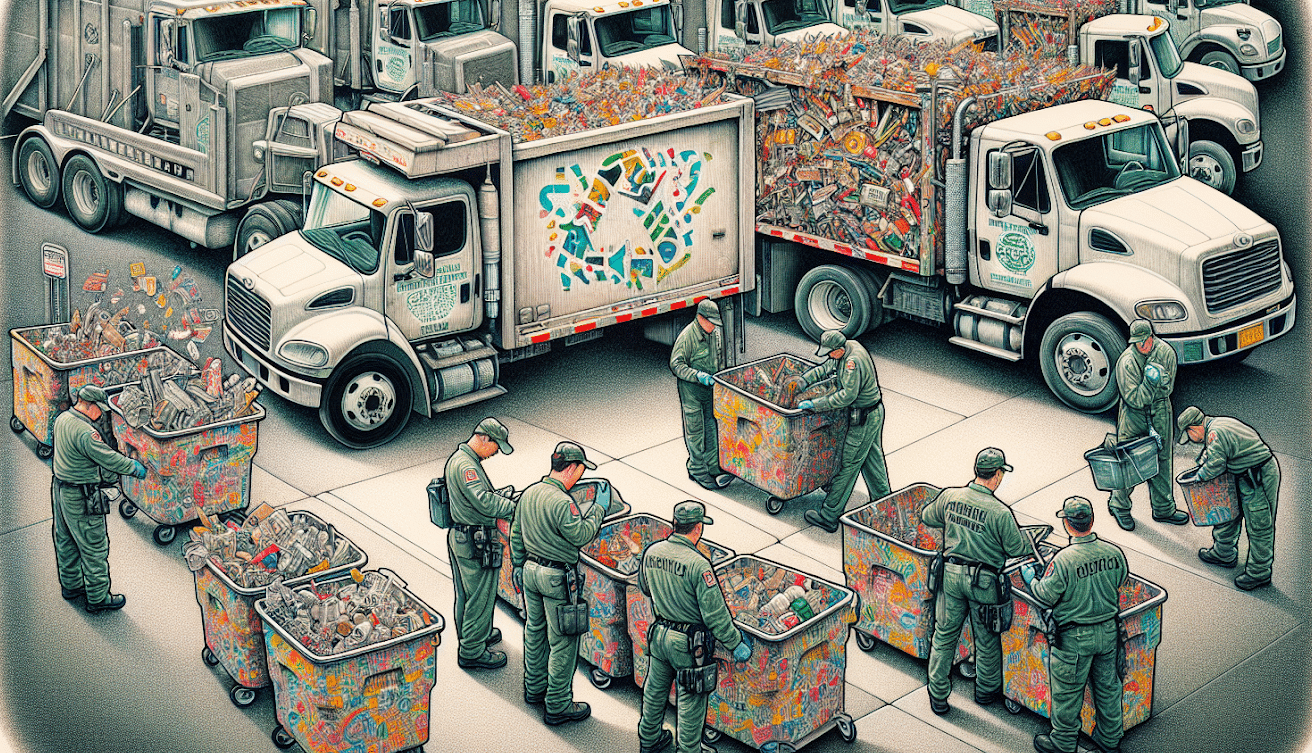Hazmat waste removal involves safely and legally disposing of hazardous materials. This guide covers everything you need to know about identifying hazardous waste, complying with regulations, and choosing the right removal service.
Key Takeaways
- Hazardous waste is classified into categories based on the quantity produced, dictating the regulatory requirements for management and disposal.
- Strict compliance with regulations, including securing permits and using the e-Manifest system, is essential for safe hazardous waste management.
- Choosing a competent hazmat waste removal service involves verifying their certifications, evaluating customer feedback, and considering customized pick-up solutions for efficient waste handling.
Understanding Hazmat Waste Removal
Hazardous waste is defined as materials that can pose a danger to human health or the environment due to their properties. These waste materials can originate from various sources, including industrial processes, batteries, and medical waste. Identifying what constitutes hazardous waste is fundamental to its effective management. Hazardous waste is not limited to large industrial operations; even households generate hazardous wastes, such as cleaning agents, paints, and electronic waste.
Different categories of hazardous waste generators are classified based on the monthly quantity of waste they produce. Very Small Quantity Generators (VSQGs) produce 100 kg or less of hazardous waste monthly, while Small Quantity Generators (SQGs) generate between 100 kg and 1,000 kg. Large Quantity Generators (LQGs), on the other hand, produce 1,000 kilograms or more of hazardous waste each month.
These classifications dictate the necessary regulatory requirements and management practices.
Regulatory Compliance for Hazmat Waste Removal
Stringent regulations govern hazardous waste management to safeguard human health and the environment. The Resource Conservation and Recovery Act (RCRA) provides the framework for the appropriate management of hazardous waste from its creation to disposal. This act, enforced by the Environmental Protection Agency (EPA), establishes guidelines that hazardous waste generators must follow to remain compliant.
Adhering to hazardous waste regulations is both a legal obligation and a key aspect of environmental stewardship. Transporters of hazardous waste must adhere to both EPA regulations and the United States Department of Transportation (DOT) hazardous materials regulations.
Choosing a hazmat waste removal service requires verifying their compliance with relevant state and federal regulations. This compliance helps avoid potential liabilities and ensures that hazardous waste is managed safely and effectively.
Obtaining Necessary Permits and Licenses
Securing the required permits and licenses is vital for legal compliance and environmental protection in hazardous waste management. Transporters must notify the EPA of their hazardous waste activities through specific forms. This notification process ensures that all hazardous waste activities are tracked and managed in accordance with federal regulations.
Local authorities also play a significant role in the permitting process. Collaborating with local municipalities and regulatory bodies ensures all requirements are met. This involves comprehending local regulations and obtaining the required permits for legal operation.
Non-compliance with these requirements can lead to severe penalties and environmental damage.
Complying with Hazardous Waste Manifest System
The Uniform Hazardous Waste Manifest is a critical document for tracking the movement of hazardous waste from the generator facility to the management facility. This manifest contains essential data on the waste type, quantity, handling instructions, and signatures of all parties involved in the transportation process. The manifest’s main purpose is to guarantee the safe and compliant transportation of hazardous waste.
On June 30, 2018, the EPA introduced the Hazardous Waste Electronic Manifest (e-Manifest) System to enhance tracking efficiency. This electronic system minimizes paperwork and streamlines the tracking process, making it easier for generators and transporters to comply with regulatory requirements. The e-Manifest system is a significant advancement in hazardous waste management, ensuring that all waste is tracked accurately and transparently.
Safe Handling and Transportation of Hazmat Waste
Safe handling and transportation of hazardous waste are paramount to preventing environmental pollution and ensuring public safety. Hazardous waste transporters are responsible for moving hazardous waste from the generation site to the disposal facility. Their role is crucial in managing the risks associated with hazardous waste and ensuring that it is handled safely throughout the transportation process.
Transporters must adhere to U.S. DOT hazardous materials regulations to ensure safe transportation. This involves adhering to specific guidelines to minimize risks during transportation. A manifest is mandatory for Large Quantity Generators (LQGs) and Small Quantity Generators (SQGs) transporting hazardous waste off-site. Accurate documentation and regulatory compliance are vital for safe transportation.
Packaging and Labeling Requirements
Effective packaging and labeling of hazardous waste containers ensure safe handling. Every hazardous waste container must be closed and secured at all times, except during the actual process of adding or removing waste. This requirement prevents accidental spills and leaks that could pose a risk to human health and the environment.
Hazardous waste containers should be compatible with the type of waste they hold to prevent leaks and spills. Additionally, the proper labeling of hazardous waste containers is essential to facilitate emergency response and ensure that all parties involved in the handling and transportation process are aware of the contents.
Adhering to federal regulations on packaging and labeling is critical for safe hazardous waste management.
Emergency Response Procedures
In the event of a hazardous waste spill, immediate action is required to protect health and the environment. Implementing containment measures is vital for controlling and mitigating spills. This includes using appropriate materials to absorb the spill and prevent it from spreading to unintended areas.
Notifying authorities is essential to ensure proper emergency response and coordination. Adhering to outlined protocols ensures effective spill management and minimizes risks to health and the environment.
Effective emergency response procedures are essential for responsible hazardous waste management.
Hazmat Waste Disposal Methods
Correct hazardous waste disposal is crucial to avoid significant health risks and environmental contamination. Hazardous waste can exist in various forms, such as liquids, solids, gasses, and sludges, each requiring specific management techniques. Identifying, treating, and recycling or disposing of hazardous wastes correctly is essential for safe and compliant waste management.
Treatment Storage and Disposal Facilities (TSDFs) are crucial in managing large volumes of hazardous waste. Due to the risks associated with handling hazardous materials, these facilities are subject to stringent regulations. Proper management at TSDFs ensures that hazardous waste is disposed of safely and in accordance with regulatory requirements.
Proper treatment and disposal of waste mitigate the risks associated with hazardous and non-hazard waste.
Household Hazardous Waste Collection Programs
Household Hazardous Waste (HHW) includes products containing corrosive, toxic, ignitable, or reactive ingredients. These items, commonly found in homes, can pose significant risks if not managed properly. Televisions, tablets, cell phones, and computers are examples of electronic waste that can be taken to HHW Collection Centers.
Communities often provide household hazardous waste collection programs to facilitate safe disposal for residents. Orange County residents can dispose of their HHW items free of charge at any of the four Household Hazardous Waste Collection Centers in the County. Residents may be required to provide proof of County residence to use these centers.
The EPA also has initiatives addressing managing specific types of hazardous waste, including household hazardous waste.
Choosing a Hazmat Waste Removal Service
Choosing the right hazmat waste removal service is essential for safe and compliant waste management. Prioritizing a service provider’s certifications ensures they meet industry safety and regulatory standards. Balancing cost, liability, and service quality is crucial in making an informed decision.
A competent hazmat waste removal contractor will help you navigate the complexities of hazardous waste regulations and ensure that all waste is managed safely and effectively. Assessing service providers’ regulatory compliance and track records aids in selecting the right partner for hazardous waste management.
Evaluating Service Providers
Customer reviews and references are key indicators of a hazmat waste removal service’s reputation. These reviews offer valuable insights into the service provider’s performance and reliability. It is essential to consider customer feedback and not base your decision solely on cost, as this can lead to poor service and increased liability.
It is essential to select a disposal company that offers proof of compliance with hazardous waste regulations. A reliable contractor will assist you in managing hazardous waste safely and efficiently, ensuring that all regulatory requirements are met.
Thoroughly evaluating service providers aids in making an informed decision.
Customized Pick-Up Schedules
Customized pick-up schedules address the unique needs of businesses and residents, ensuring efficient hazardous waste removal. These schedules minimize disruptions by aligning pick-up times with business operational hours.
Tailored pick-up schedules enhance residents’ convenience and make hazardous waste disposal more accessible. Important factors to consider in establishing customized schedules include the volume of waste generated, frequency of disposal, and compliance with regulatory requirements.
Ultimately, customized pick-up schedules improve safety and environmental compliance, reinforcing responsible waste management.
Key Resources for Hazmat Waste Management
Federal regulations and guidelines from the EPA and DOT are crucial for safe and compliant hazardous waste removal. Comprehending applicable federal and state regulations helps businesses avoid penalties and ensure safety in hazardous waste management.
EPA guidelines offer valuable information on handling, transportation, and disposal of hazardous materials. Following federal guidelines and industry standards ensures efficient and compliant hazmat waste management.
Training employees in safe handling and transportation of hazardous materials is a fundamental practice in the industry. Regular audits and inspections can help organizations maintain compliance with safety standards related to hazmat waste.
Summary
In conclusion, proper hazmat waste removal is essential for protecting human health and the environment. Every step is crucial, from understanding the types and sources of hazardous waste to complying with regulatory requirements and selecting the right disposal methods. This guide has provided a comprehensive overview of these topics, equipping you with the knowledge needed to manage hazardous waste responsibly.
By following the guidelines and best practices outlined in this guide, you can ensure that hazardous waste is managed safely and effectively. Responsible actions in hazardous waste management not only help protect the environment but also ensure compliance with regulations and enhance public safety.
Frequently Asked Questions
What defines hazardous waste?
Hazardous waste is defined by its potential to harm human health or the environment due to its inherent properties. Such materials require careful management to mitigate these risks.
How is hazardous waste regulated?
Hazardous waste is regulated under the Resource Conservation and Recovery Act (RCRA), which mandates safe handling from generation to disposal. Compliance with these regulations is crucial for protecting human health and the environment.
What is the Uniform Hazardous Waste Manifest?
The Uniform Hazardous Waste Manifest is essential for ensuring the proper tracking of hazardous waste from its point of origin at the generator facility to its destination at the management facility. This document plays a crucial role in regulatory compliance and environmental protection.
Why are customized pick-up schedules important?
Customized pick-up schedules are important because they address the specific needs of businesses and residents, enhance service efficiency, and ensure adherence to regulatory requirements.
What resources are available for hazmat waste management?
Federal regulations, particularly those from the EPA and DOT, are essential resources that outline the proper handling, transportation, and disposal of hazardous materials. Utilizing these guidelines ensures compliance and safety in hazmat waste management.
